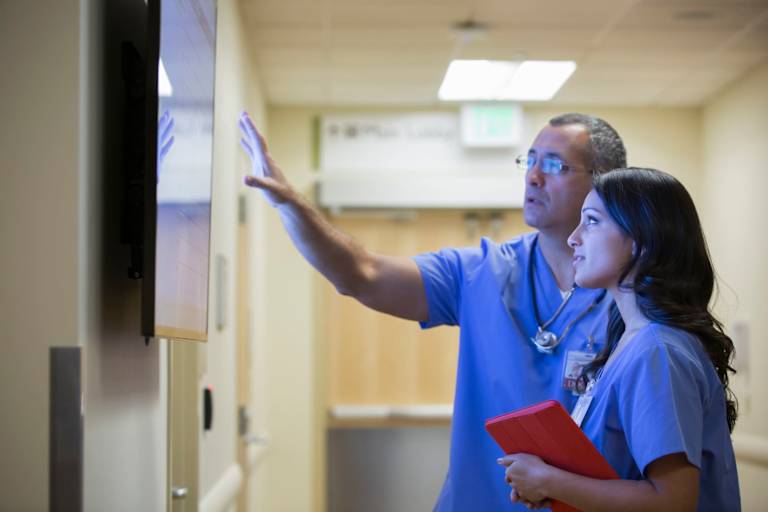Hawaii Nurses Go on Strike, and Hospital Execs Strike Back
 Credit: Getty Images
Credit: Getty Images- About 600 nurses went on strike on January 21 at Kapi‘olani Medical Center for Women & Children in Hawaii.
- Hospital executives quickly responded by announcing they were hiring hundreds of temporary nurses to fill the staffing vacuum.
- Staff nurses are requesting safer nurse-to-patient staffing ratios.
On the same day that approximately 600 nurses walked off the job to strike for safer working conditions, executives at Kapi‘olani Medical Center for Women & Children in Hawaii announced Sunday that they would bring in several hundred temporary nurses to keep the facility up and running for the duration of the work stoppage.
“I am happy to share that our patients are well taken care of. We are fully staffed, and we have no disruption in care,” Gidget Ruscetta, Kapi‘olani’s chief operating officer, said during a news conference Sunday, according to a report in the Honolulu Star-Advertiser. “Our emergency department is open, receiving ambulances, and the care is provided for our community…Our ORs are open, so our operating rooms have already done two emergency surgeries. We are very comfortable, very confident that this workforce is in place for the duration of the strike and we are well taken care of.”
As is the case with many other nurse strikes around the country, safe nurse-to-patient staffing ratios were central to the Kapi‘olani nurses’ decision to strike. In particular, according to news reports, the neonatal intensive care and labor and delivery units are chronically understaffed.
The facility, which is part of the Hawaii Pacific Health system, is the state’s only maternity and pediatric specialty hospital.
Nurses approved a strike after months of unsuccessful negotiations since mid-September. Kapi‘olani officials made what they called a final offer in mid-January, which included raises and longevity bonuses but no firm staffing ratios. The union nurses rejected the offer.
Nurses and their allies now plan to picket every day from 7 a.m. to 8:30 p.m. through January 28.
Sunday’s decision to bring in several hundred temporary nurses suggests that hospital executives, like the striking nurses, are digging in. But staff nurses also appear prepared to hold their ground.
Nurse-patient ratios, also known simply as safe staffing, is a way of mandating that nurses have a cap on the number of patients they can care for during a given shift. This prevents nursing teams from being stretched too thin in their efforts to deliver high-quality care.
Recently, nursing unions have found success in achieving safe staffing mandates through negotiations with hospitals and health systems. In December, for example, roughly 1,700 nurses at Robert Wood Johnson University Hospital in New Brunswick, New Jersey secured a safe staffing mandate after a four-month strike.
Four states — California, Massachusetts, New York, and Oregon — also have passed laws requiring safer nurse staffing.
For now, it is anyone’s guess where the strike in Hawaii might lead, but after an extended period of futility at the bargaining table and mounting frustrations over substandard conditions for work and patient care, Hawaii nurses appear primed for the long haul.
“This fight is about being able to take care of patients well, and give them the time and attention they need to heal,” the Hawaii Nurses Association wrote on its Facebook page. “It’s about leaving work feeling like you can still go back the next day. It’s about dignity, for nurses and patients — for our whole community. It’s time for a change in our healthcare system.”
You might be interested in

Nurse Strike Update: The Latest on Nursing Strikes and Labor Disputes Around the Country
Nurse strikes are underway around the country, while others are seeing results at the bargaining table.

American Nurses Association Backs Nurse-Patient Staffing Ratios
The ANA recently announced its support of mandated nurse-patient ratios. Find out what this means for the nursing workforce.

Following Historic Nurse Strike, Here’s What’s in the New Kaiser Permanente Labor Deal
The Coalition of Kaiser Permanente Unions reached a tentative agreement with Kaiser Permanente after a three-day strike. Learn more about the biggest wins for union nurses and other healthcare teams.